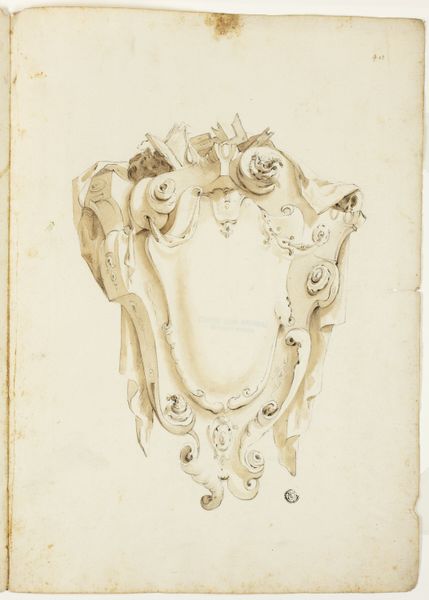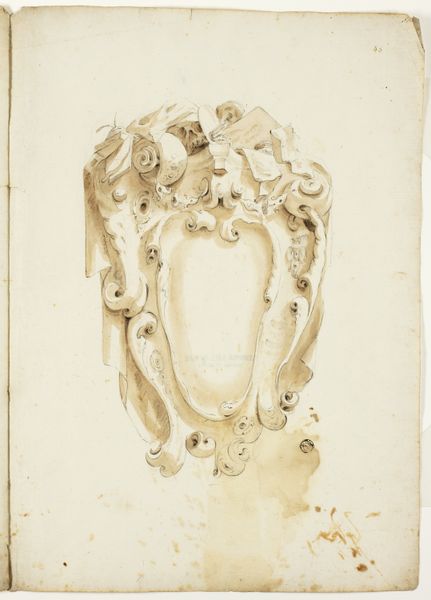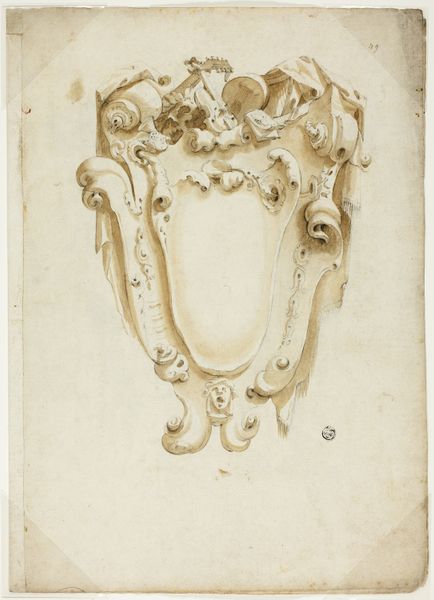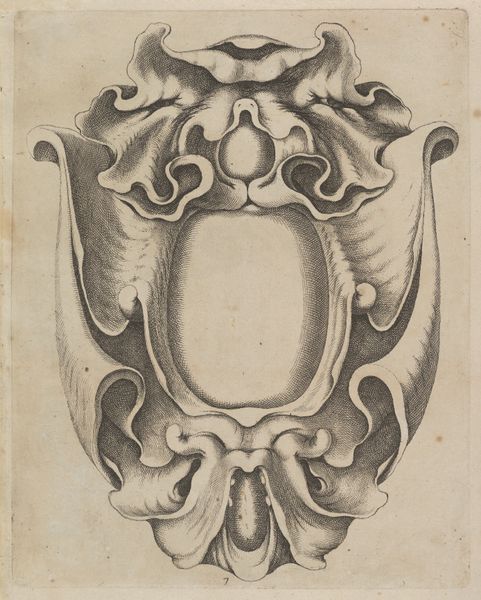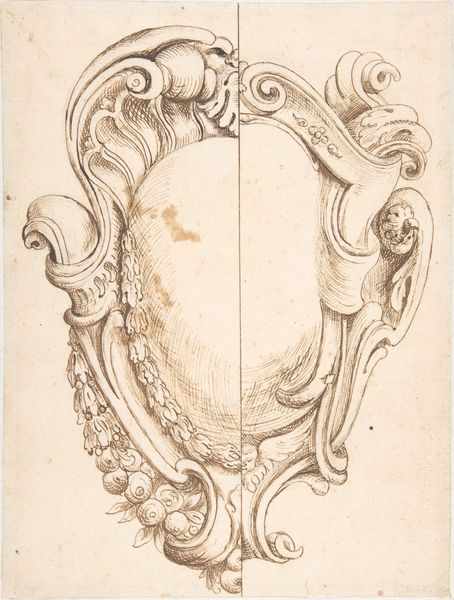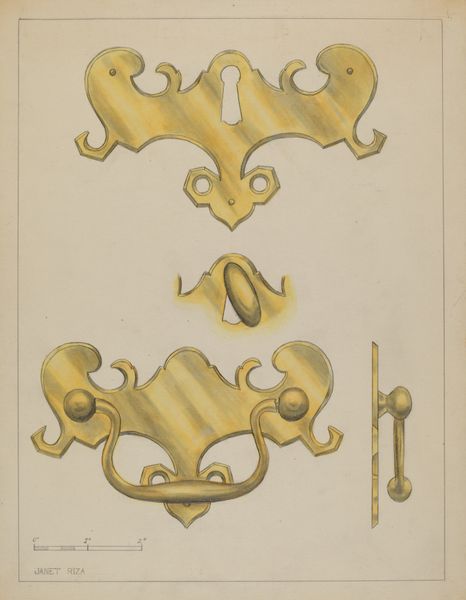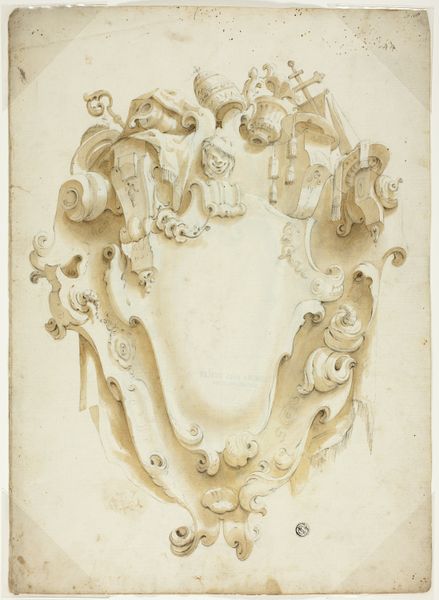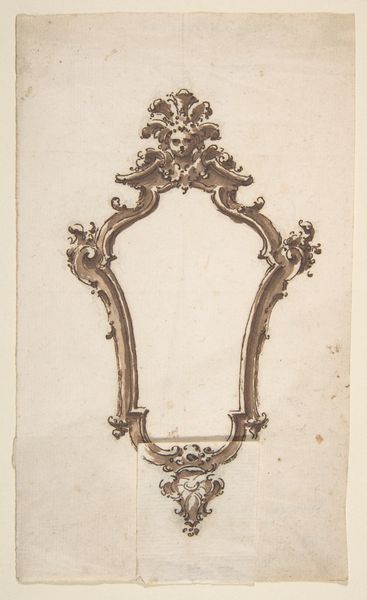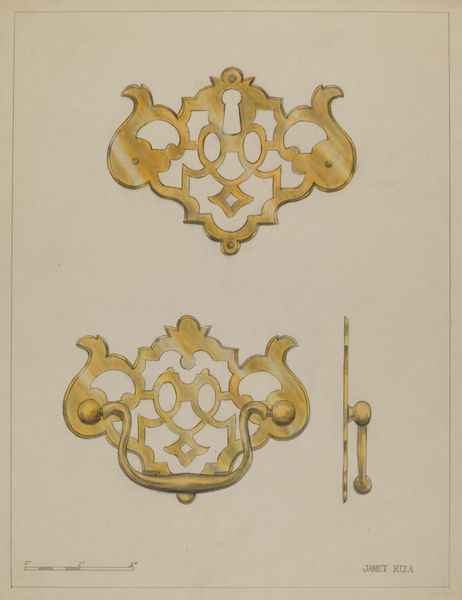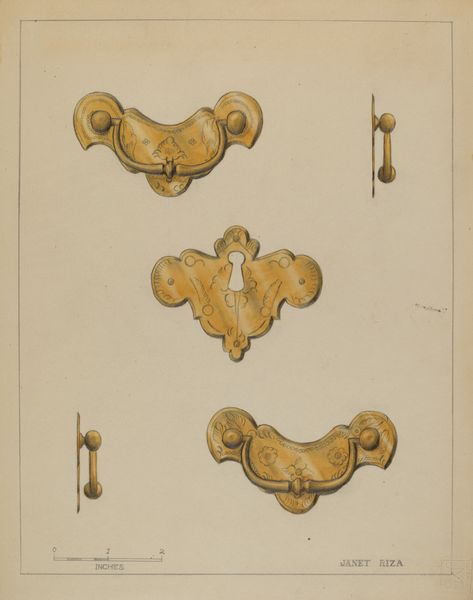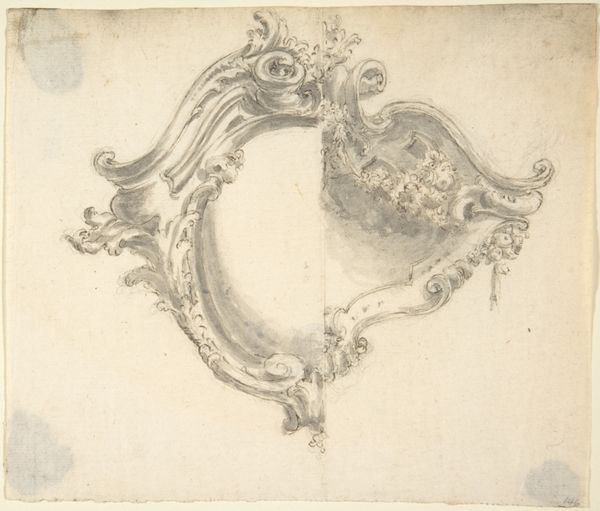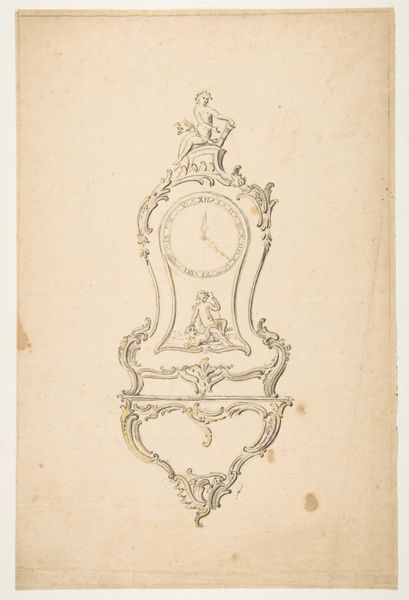
drawing, paper, chalk, black-chalk
#
portrait
#
drawing
#
paper
#
form
#
vanitas
#
geometric
#
chalk
#
watercolour illustration
#
history-painting
#
academic-art
#
black-chalk
Dimensions: 404 × 580 mm
Copyright: Public Domain
Editor: Here we have an intriguing design on paper, "Design for Escutcheon, with Skulls," created by an anonymous artist. The medium appears to be primarily chalk and black-chalk, currently housed at the Art Institute of Chicago. What really strikes me is the tension between the decorative, almost celebratory, swirls and the rather morbid skull motif. What do you make of this contrast? Curator: It's fascinating how the materials themselves contribute to this tension. The chalk, so easily manipulated, allowed for the creation of these intricate swirls. Think about the labor involved, the hours spent meticulously crafting this design. This wasn't just about aesthetics; it was about showcasing skill, a commodity in itself. And then juxtapose that with the skulls - potent symbols of vanitas, a reminder of the fleeting nature of life and the futility of earthly possessions. What’s being "protected" within that empty escutcheon? What anxieties were they responding to? Editor: So you’re suggesting the choice of materials and the elaborate technique highlight not just the artistry but also the social values around wealth and status that are being questioned? Curator: Precisely. The materials become a tool to both participate in and critique the system. The labor is valuable. The skull’s message contrasts against this economic participation; it is “consume all you can,” vs “none of it matters.” And don't forget the intended function! Escutcheons were often prominently displayed on tombs and furniture owned by powerful, wealthy families. It really asks "What meaning is *being* made and consumed by these items". Editor: It's interesting how what seems like a straightforward decorative design becomes a layered commentary when you consider the materiality and its connection to labor, value, and even mortality. Curator: Indeed, the materials tell a story that transcends mere aesthetics, and reminds us to look at the human cost involved in even the most refined forms of production and consumption. I've definitely learned to appreciate the social undertones of such pieces today.
Comments
No comments
Be the first to comment and join the conversation on the ultimate creative platform.
